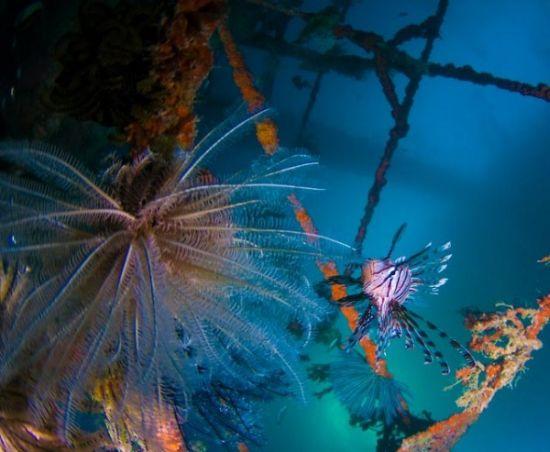 As ocean oil rigs run dry, the nemesis of many environmentalists may produce a silver lining.
As ocean oil rigs run dry, the nemesis of many environmentalists may produce a silver lining.
Defunct oil rigs are popular dive spots in the Gulf of Mexico and other areas (such as the Celebes Sea) because of the rich communities of reef life and fishes these structures attract on otherwise sandy bottoms. They are not coral reefs, obviously, but could could they give declining marine animals a fighting chance in an increasingly humanized ocean world?
Professor David Booth and colleagues of Australia’s University of Technology think so, as argued in a forthcoming paper in Frontiers in Ecology and the Environment. They recently pitched the idea to the national congress of the Australian Petroleum Production and Exploration Association. The idea represents a potential win-win situation: properly decommissioned rigs attract sea life, and leaving them in place saves the oil industry piles of money that would be required to remove them after they’ve served their primary purpose.
“Rigs themselves have been described as ‘de facto marine protected areas’ because they exclude trawl fishing and their large internal spaces offer shelter to fish and other organisms,” the authors said.
“Deep-sea communities in particular may benefit because the characteristics of their species (longevity, slow growth, late reproduction, low fecundity) make them highly vulnerable to exploitation.
“We suggest that a rigs-to-reef program in the deep sea, in conjunction with the establishment of marine protected areas, may offer a means of conserving deep-sea communities.
Not everyone agrees with the idea, of course, and there are indeed major questions to answer before such a plan is adopted. For this reason, Booth and colleagues suggest that the oil companies buck up for research:
“We recommend that industry savings from a rigs-to-reef program should support independent research and monitoring to evaluate the effectiveness of rigs in fulfilling their intended purpose as artificial reefs in the deep sea.”
From Underwater Times.

Leave a Reply